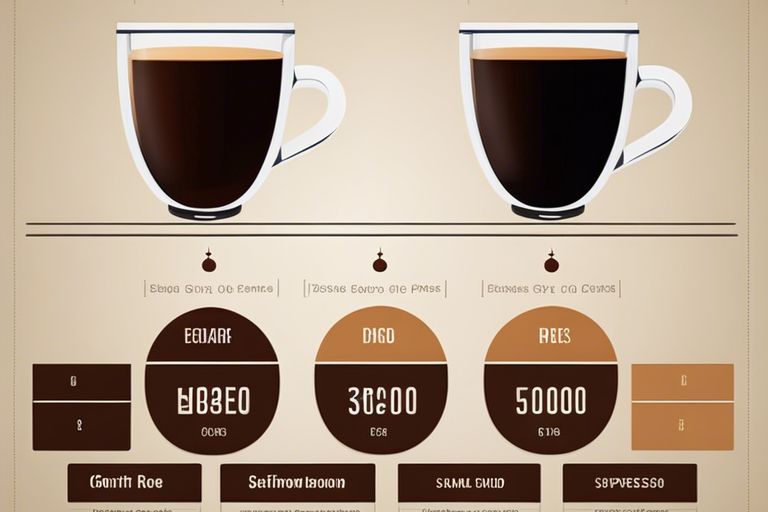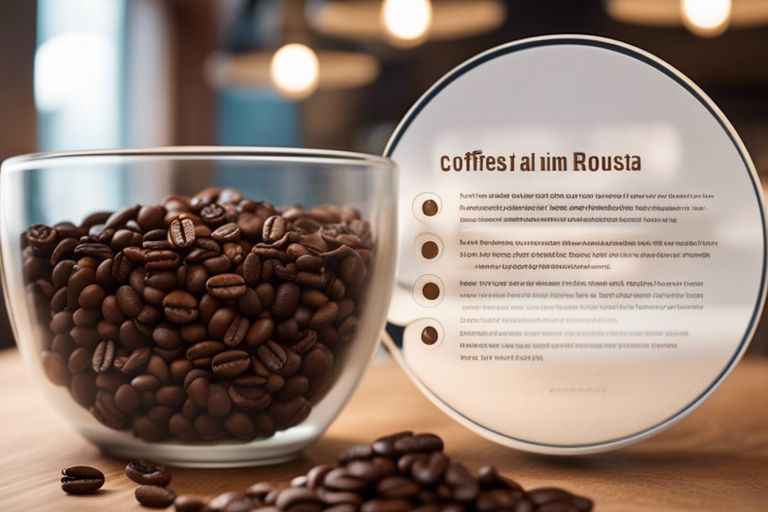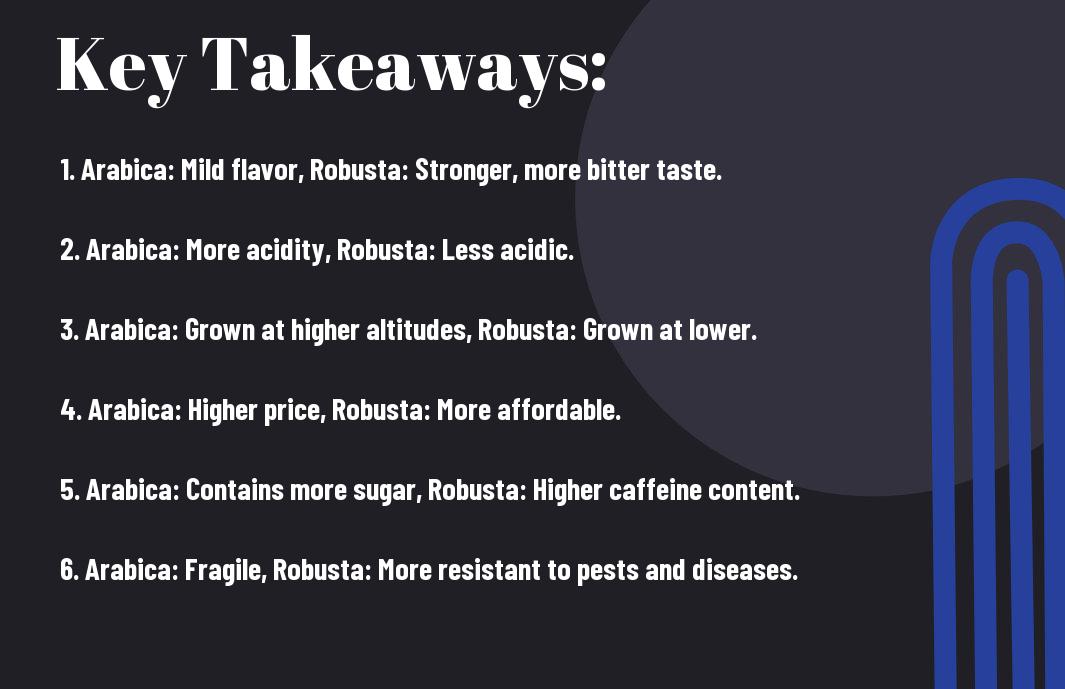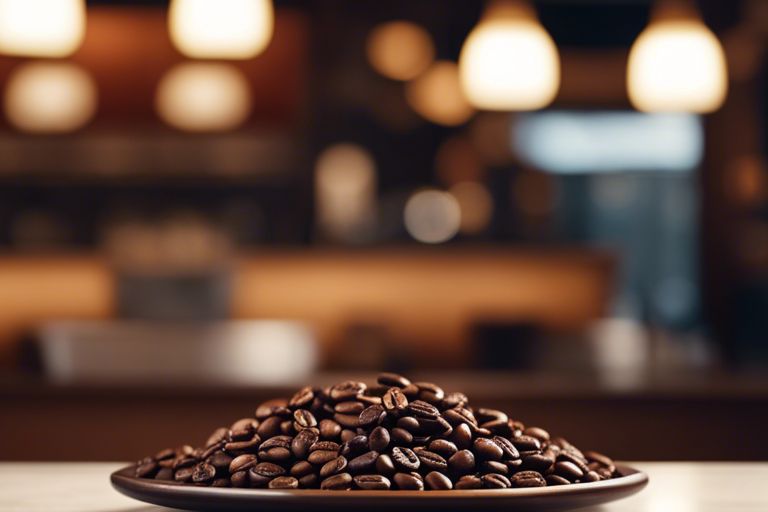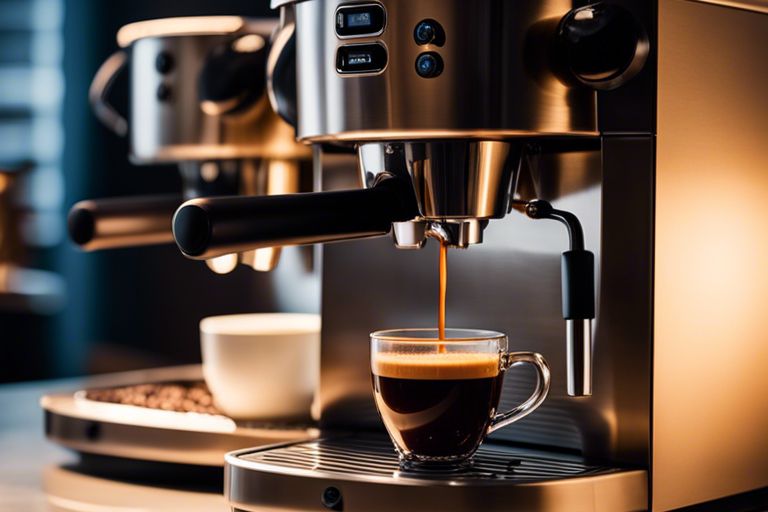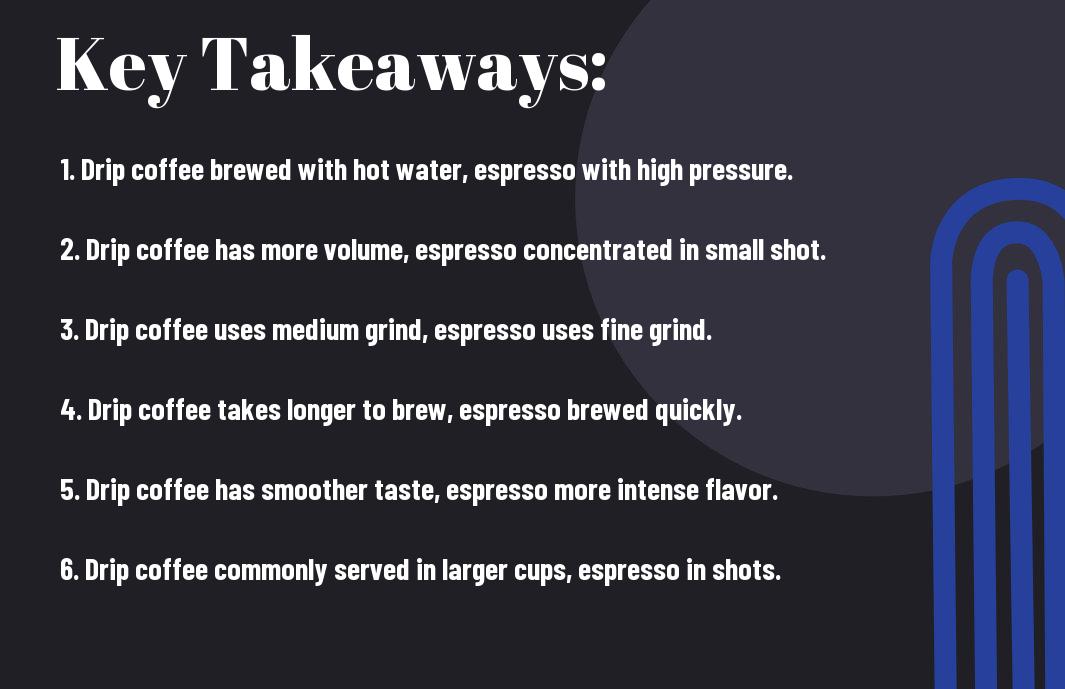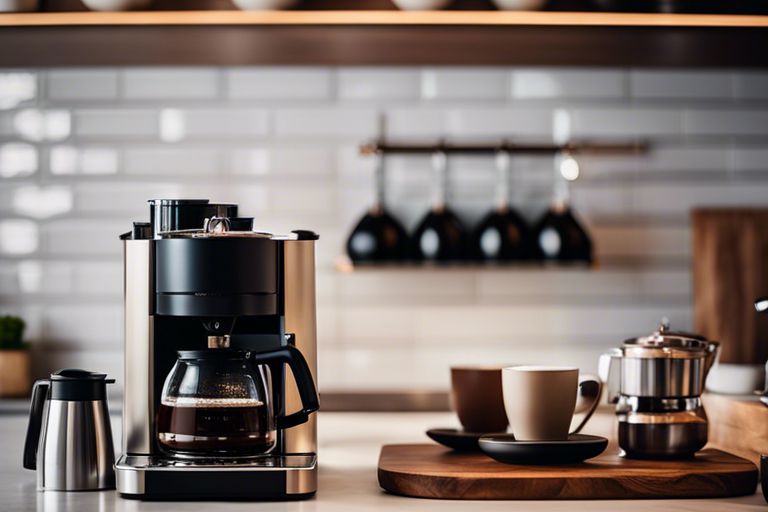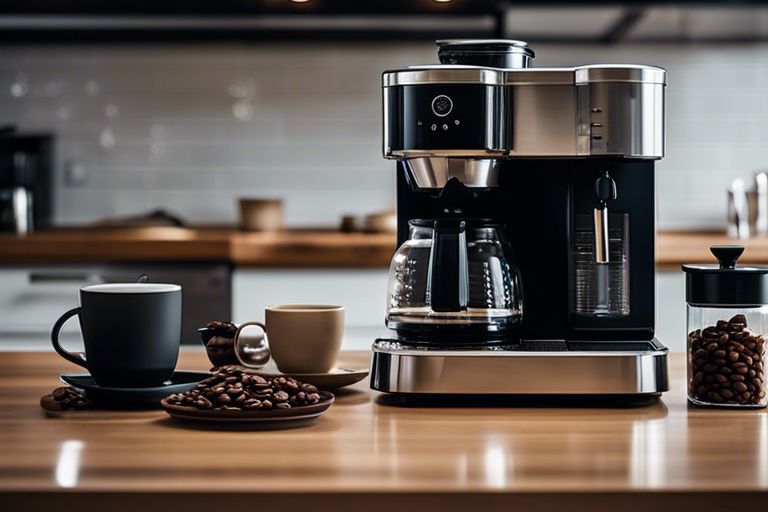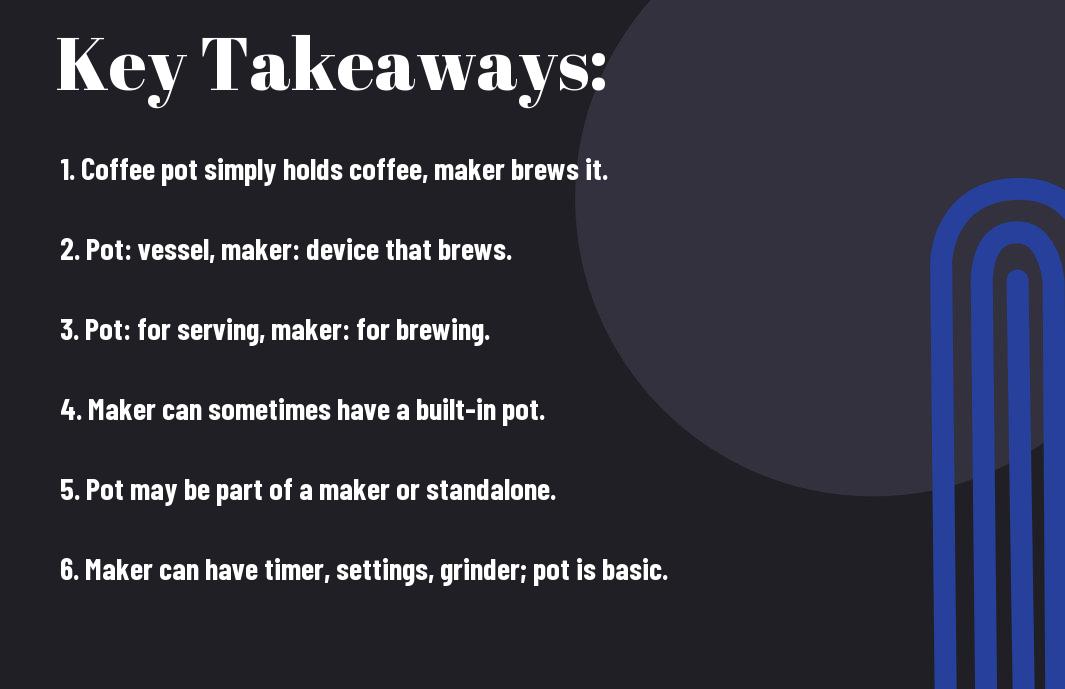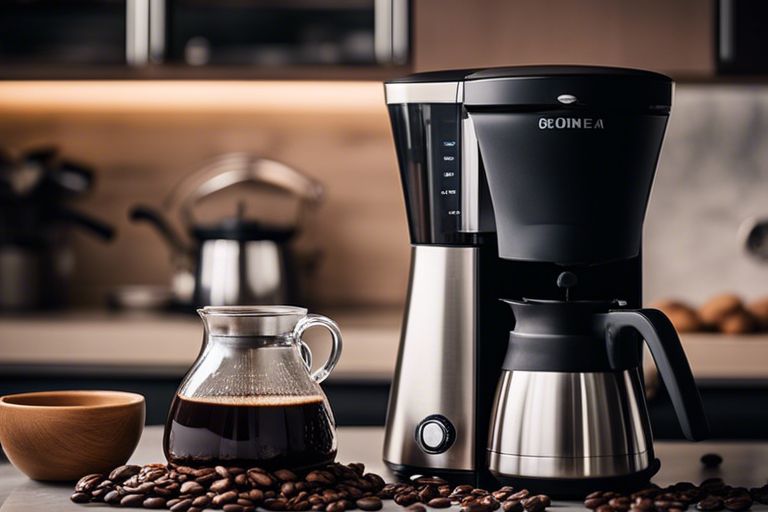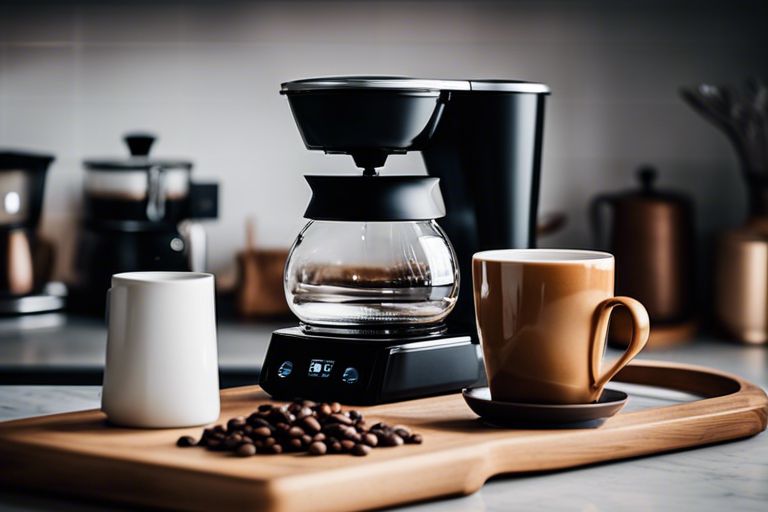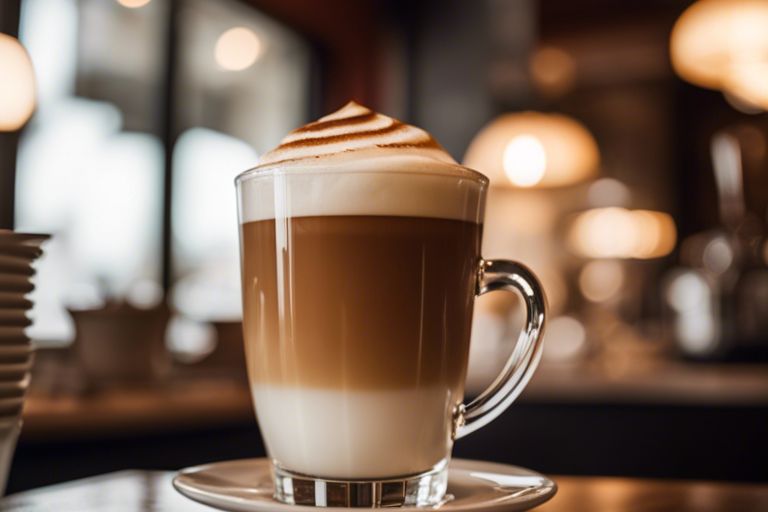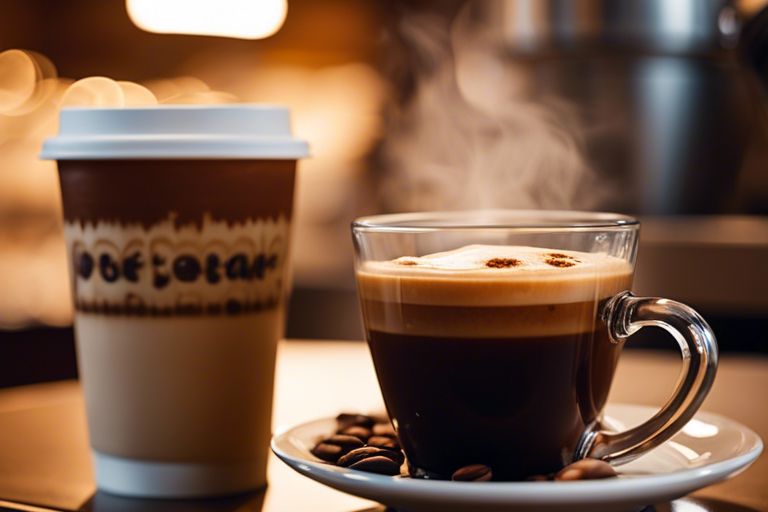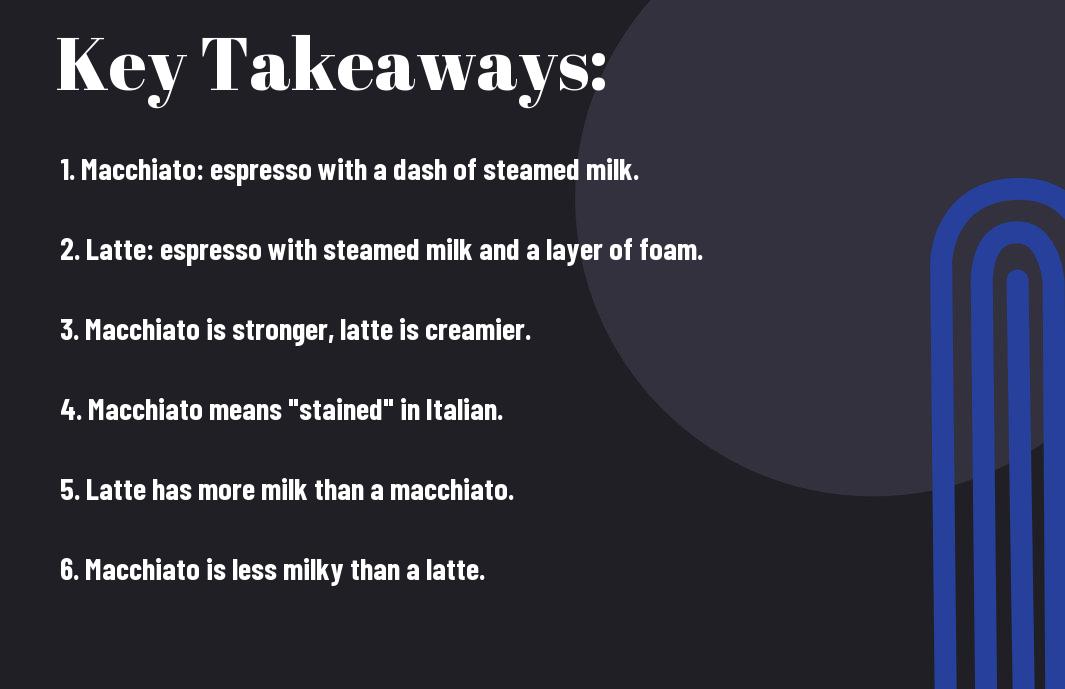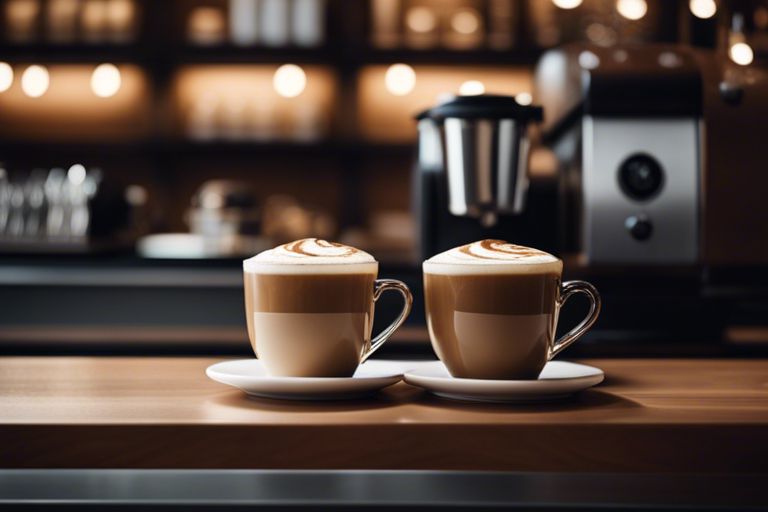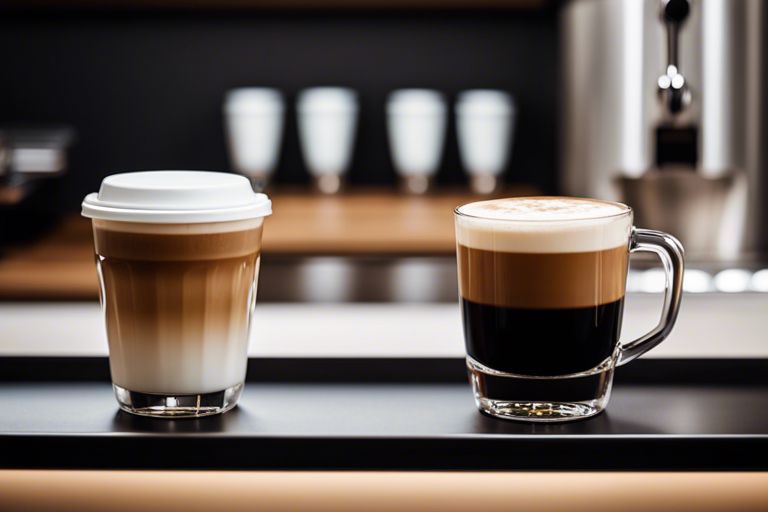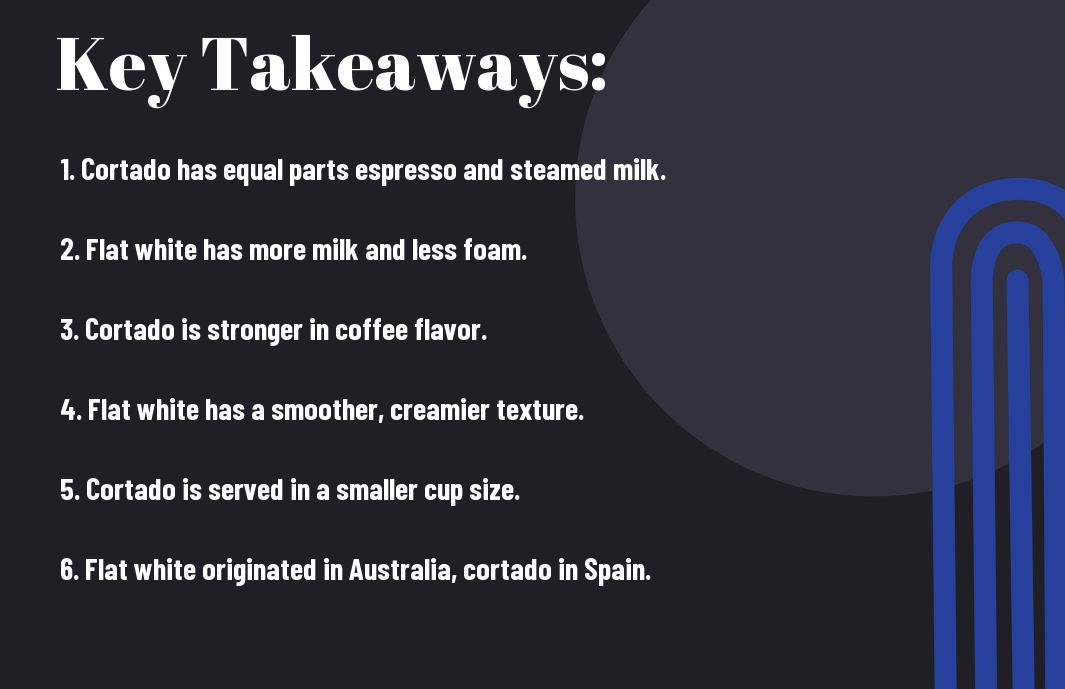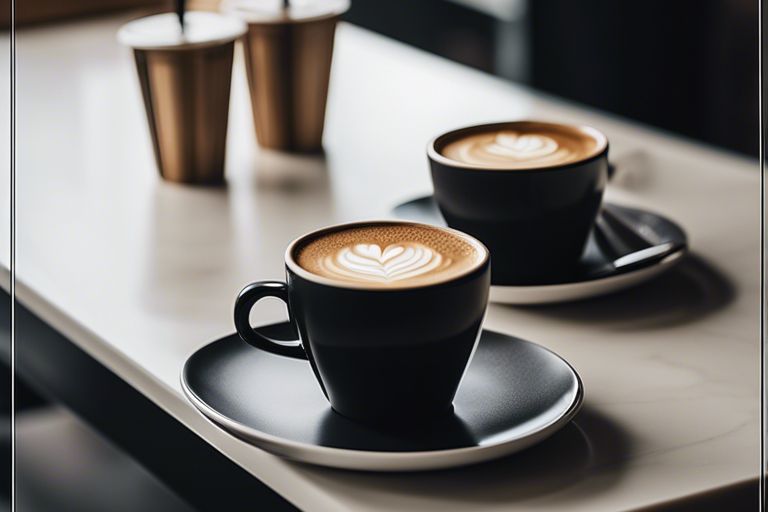Many coffee lovers often find themselves pondering the age-old question: What distinguishes a latte from a cappuccino? Fear not, dear reader, for I shall unravel this caffeinated conundrum with wit and wisdom. These two espresso-based drinks may appear similar at first glance, but their ratios of espresso, steamed milk, and foam are what set them apart. So let’s investigate the delightful world of coffee concoctions and uncover the nuances that make a latte and a cappuccino unique.
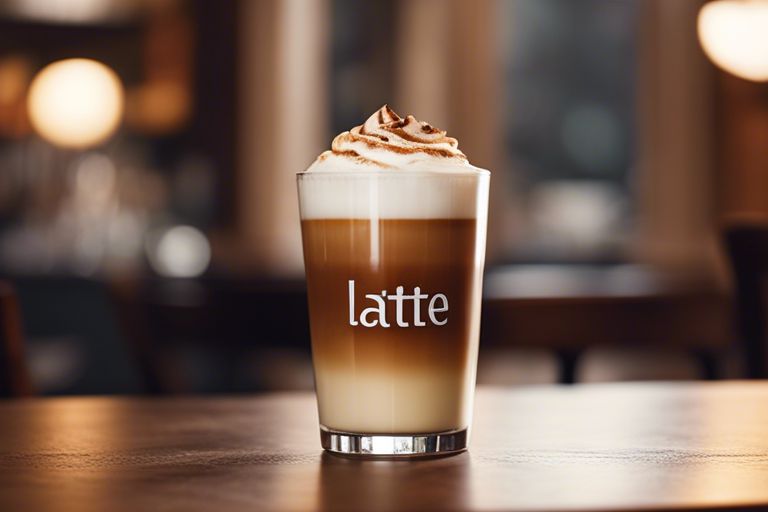
Key Takeaways:
- Ratio: A key difference between a latte and a cappuccino is the ratio of espresso, steamed milk, and milk foam used in each.
- Composition: A latte typically has more steamed milk and a thin layer of foam, while a cappuccino has equal parts of espresso, steamed milk, and foam, giving it a frothier texture.
- Texture: The texture of a latte is smoother and creamier due to the higher amount of steamed milk, while a cappuccino has a drier foam on top.
- Serving Size: Lattes are generally served in larger cups compared to cappuccinos, which are served in smaller cups to accommodate the thicker foam layer.
- Flavor: The different ratios of milk and foam in lattes and cappuccinos result in distinct flavor profiles, with lattes being milder and creamier, and cappuccinos having a bolder espresso taste with a foamy top.
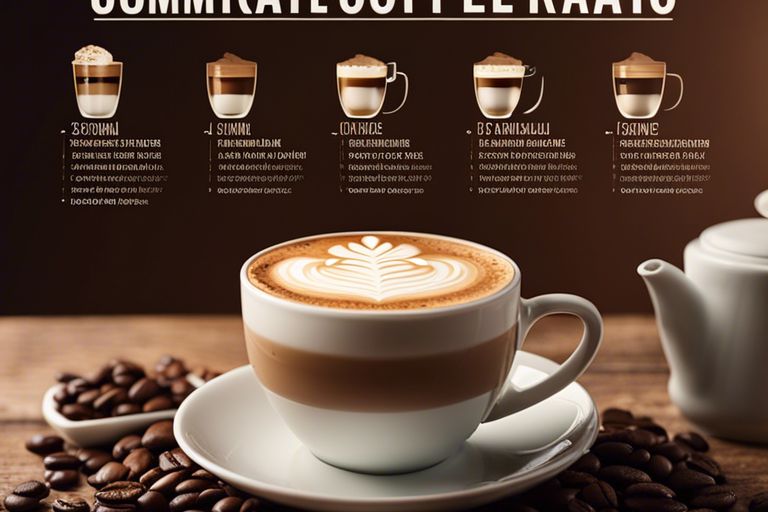
The Basics
What is a latte?
Before we investigate into the nuances that differentiate lattes and cappuccinos, let’s start with the basics. A latte, short for caffè latte, is a popular coffee drink that originated in Italy. It is made with a shot of espresso and steamed milk. The ratio of espresso to steamed milk is typically around 1:3 or 1:5, resulting in a creamy and smooth beverage.
What is a cappuccino?
Basics: The cappuccino is another well-loved coffee choice that shares similarities with the latte. It is traditionally made with equal parts of espresso, steamed milk, and milk foam. The name “cappuccino” is said to be inspired by the Capuchin friars, whose brown robes resemble the color of the coffee drink.
The cappuccino is known for its luxurious foam layer, which adds a velvety texture to each sip. This beloved drink is often topped with a sprinkle of cocoa powder or cinnamon for an extra touch of flavor.
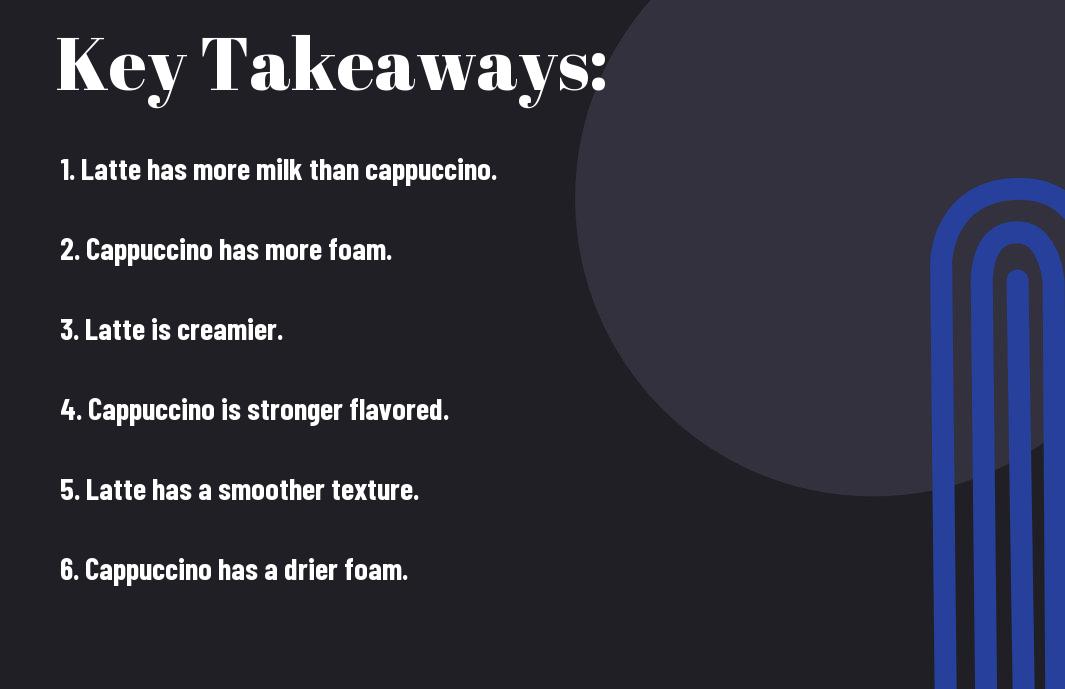
The Origins
A brief history of latte
While the exact origins of the latte are not entirely clear, it is believed to have roots in Italy. The word “latte” itself means milk in Italian, and the drink is necessaryly a combination of espresso and steamed milk. This popular coffee beverage gained traction in the United States during the coffee boom of the 1980s and has since become a staple in cafes around the world.
A brief history of cappuccino
Any coffee aficionado would know that the cappuccino has a long and rich history. This iconic drink also hails from Italy, with its name derived from the Capuchin friars, who wore brown robes with hoods that resembled the color of a perfectly brewed cappuccino. Traditionally, a cappuccino consists of equal parts espresso, steamed milk, and milk foam, all skillfully layered to create a harmonious blend of flavors and textures.
Briefly, the cappuccino has evolved over the years, with variations like flavored syrups and alternative milk options adding a modern twist to this classic drink. Despite these adaptations, the essence of a cappuccino remains the balanced combination of espresso, steamed milk, and foam that has delighted coffee lovers for generations.
Understanding the origins
As with many coffee traditions, the latte and cappuccino have rich histories that date back to Italy. While the latte emphasizes the creamy texture of steamed milk mixed with espresso, the cappuccino showcases the art of layering espresso, milk, and foam to create a harmonious balance of flavors. These distinct origins contribute to the unique characteristics that set lattes and cappuccinos apart in the world of coffee culture.
The Ingredients
Milk, espresso, and foam in lattes
Unlike cappuccinos, lattes are known for their smooth and creamy texture that comes from steamed milk. Lattes are made with a shot of espresso topped with steamed milk, creating a perfect balance between the richness of the coffee and the creaminess of the milk. The steamed milk in lattes is usually more prevalent than the foam, giving the drink a velvety mouthfeel.
Milk, espresso, and foam in cappuccinos
On the other hand, cappuccinos are characterized by equal parts of espresso, steamed milk, and foam. This results in a more intense coffee flavor with a thicker and airier foam than lattes. The balance between the espresso, steamed milk, and foam is crucial in creating the signature layers of a cappuccino – the rich espresso at the bottom, creamy steamed milk in the middle, and light foam on top.
Foam, or frothed milk, plays a significant role in cappuccinos. The foam is created by heating and frothing milk with steam, which introduces tiny air bubbles and gives the cappuccino its characteristic light and airy texture. The foam not only enhances the presentation of the cappuccino but also adds a layer of complexity to the overall flavor profile of the drink.
The Texture and Temperature
Now, let’s explore the world of lattes and cappuccinos and explore the differences in texture and temperature that set these two popular coffee drinks apart.
| The Velvety Texture of Lattes | The Layered Texture of Cappuccinos |
The Velvety Texture of Lattes
To start with, lattes are known for their velvety smooth texture. Made with a larger amount of steamed milk and a small layer of foam on top, lattes have a creamy consistency that is comforting and satisfying. The steamed milk in a latte is what gives it its luxurious and smooth mouthfeel, making it a perfect choice for those who prefer a richer coffee experience.
The Layered Texture of Cappuccinos
For cappuccinos, the texture is all about layers. Cappuccinos are crafted with equal parts of espresso, steamed milk, and foam, creating a drink with a distinct separation of textures. The bottom layer is the espresso, followed by the velvety steamed milk, and topped with a thick layer of airy foam. This layered approach gives cappuccinos a more complex texture compared to lattes, allowing each sip to be a unique blend of flavors and sensations.
Texture is a crucial element in the world of coffee, and whether you prefer the smoothness of a latte or the layers of a cappuccino, there is a perfect choice for every coffee lover based on their preference for mouthfeel and overall experience.
The Flavor Profile
The rich flavor of lattes
To truly appreciate the rich flavor of a latte, one must savor the smooth combination of espresso and steamed milk. The espresso provides a robust and intense flavor, while the steamed milk adds a creamy and slightly sweet touch. This velvety concoction is perfect for those who enjoy a milder coffee experience with a luxurious feel.
The balanced flavor of cappuccinos
For those looking for a more balanced flavor profile, cappuccinos are the ideal choice. With equal parts espresso, steamed milk, and milk foam, this drink offers a harmonious blend of strong coffee notes, creamy texture, and a hint of frothy lightness. The layers of flavors in a cappuccino create a delightful drinking experience that is both satisfying and nuanced.
With the perfect ratio of ingredients, cappuccinos achieve a delicate balance that appeals to a wide range of coffee enthusiasts. The espresso cuts through the richness of the steamed milk, while the airy foam adds a lightness that keeps the drink from feeling too heavy. This well-rounded profile makes cappuccinos a popular choice for those who appreciate complexity in their coffee beverages.
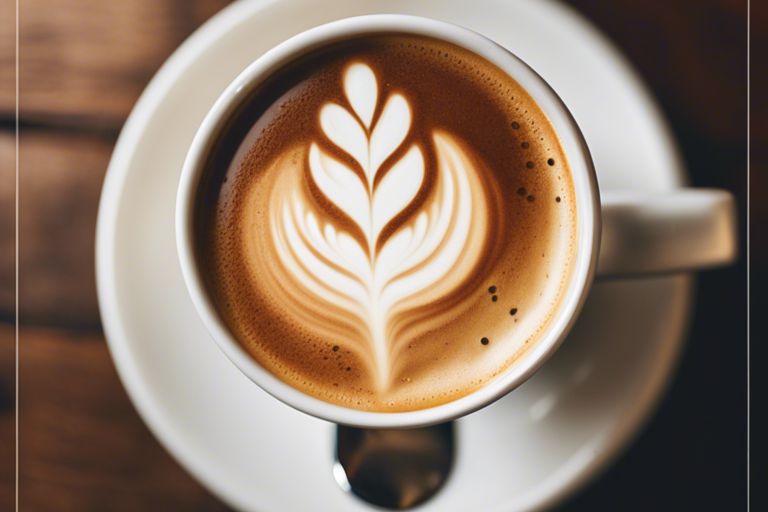
The Cultural Significance
Lattes in modern coffee culture
After the first Starbucks opened in Seattle in 1971, the latte quickly became a staple in modern coffee culture. Its popularity has only grown since then, becoming a symbol of sophistication and a go-to choice for many coffee lovers. The latte’s smooth and creamy texture, combined with the perfect balance of espresso and steamed milk, has made it a beloved beverage worldwide.
Cappuccinos in traditional Italian culture
The cappuccino has a rich history in traditional Italian culture, where it is not just a drink but a way of life. In Italy, cappuccinos are enjoyed strictly in the morning and never after a meal, as the milk is believed to interfere with digestion. This strict adherence to cappuccino consumption reflects the deep-rooted traditions and rituals surrounding coffee in Italy, where coffee is savored and enjoyed in specific ways.
Traditional Italian cappuccinos consist of equal parts espresso, steamed milk, and frothy milk foam, served in a smaller cup than their American counterparts. This precise balance of ingredients and presentation is a nod to the meticulous attention to detail that defines Italian cuisine and culture.
Conclusion
On the whole, it is clear that while both lattes and cappuccinos are popular coffee drinks, there are key differences that set them apart. The ratio of espresso, steamed milk, and foam varies between the two beverages, leading to distinct taste and texture profiles. Understanding these differences can help coffee lovers make informed choices when ordering their favorite espresso-based drinks.
Next time you find yourself at a café pondering whether to order a latte or a cappuccino, remember that a latte is characterized by a higher ratio of steamed milk to foam, providing a smoother and creamier texture. On the other hand, a cappuccino offers a stronger coffee flavor with a balanced combination of espresso, steamed milk, and foam. With this knowledge in mind, you can confidently order the perfect coffee drink to suit your preferences.
FAQ
Q: What is the difference between a latte and a cappuccino?
A: Ah, the age-old question that has puzzled coffee lovers for centuries! The main difference lies in the ratio of espresso, steamed milk, and foam. A latte is made with more steamed milk and a light layer of foam, while a cappuccino has equal parts of espresso, steamed milk, and foam, creating a frothier and stronger coffee experience.
Q: How can I tell a latte from a cappuccino just by looking at them?
A: If you’re a visual coffee detective, pay attention to the presentation. A latte is characterized by a thin layer of foam on top, while a cappuccino boasts a thick and luxurious layer of foam that often spills over the edges of the cup like a foamy waterfall. Note, it’s all in the foam!
Q: Which one is creamier, a latte or a cappuccino?
A: Ah, the creaminess factor! If you’re a fan of velvety smooth textures, the latte is your go-to drink. With its higher milk content, a latte offers a creamy and mellow flavor profile. On the other hand, if you prefer a more intense and slightly drier experience, the cappuccino’s rich and frothy foam will be right up your alley. It all boils down to your personal creaminess preference!




